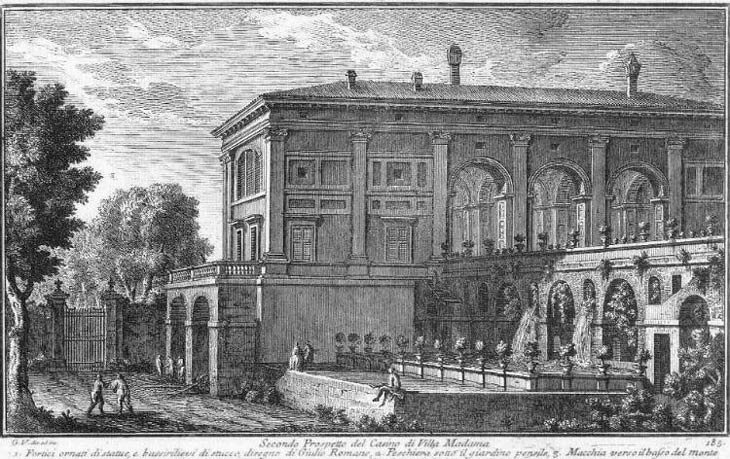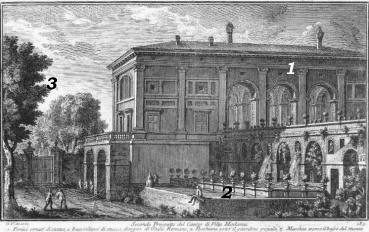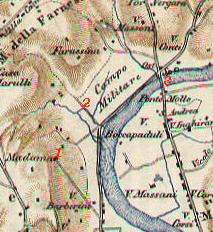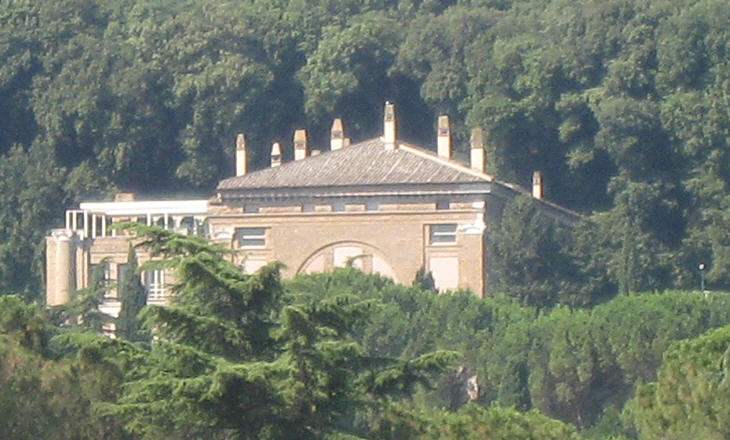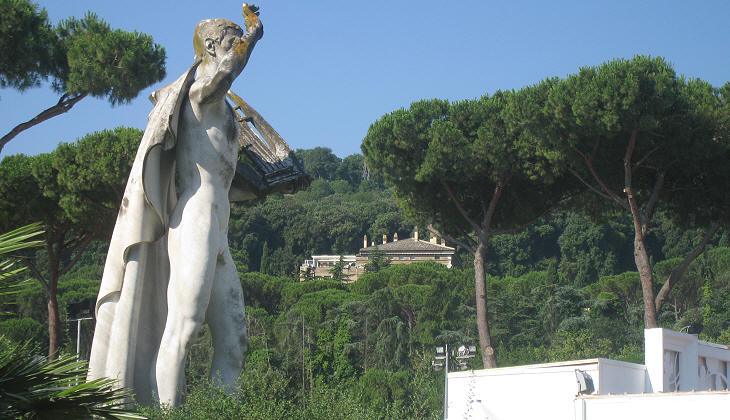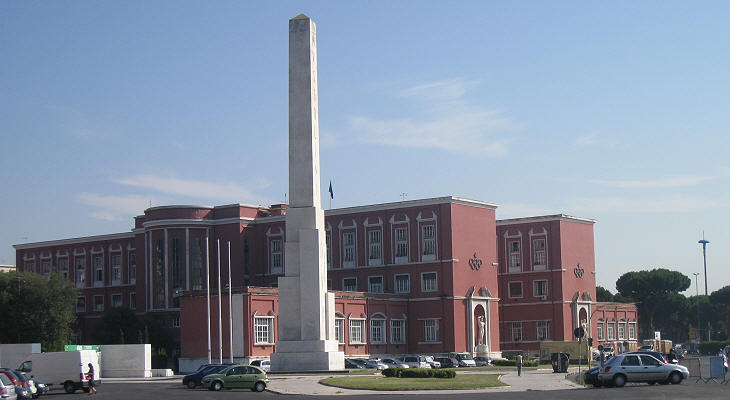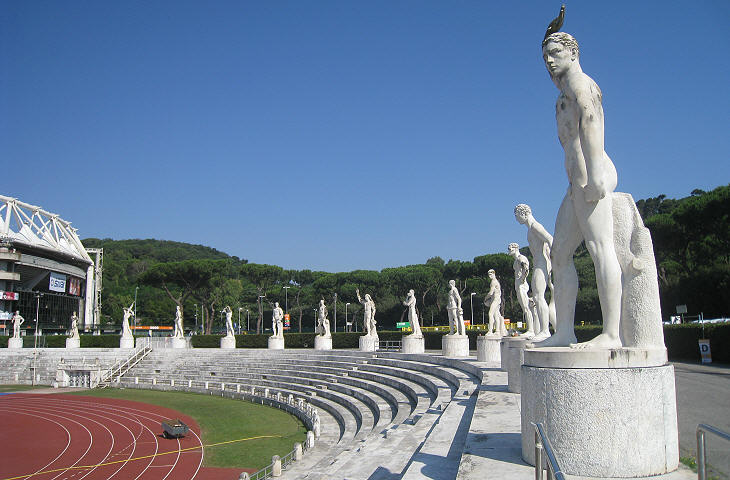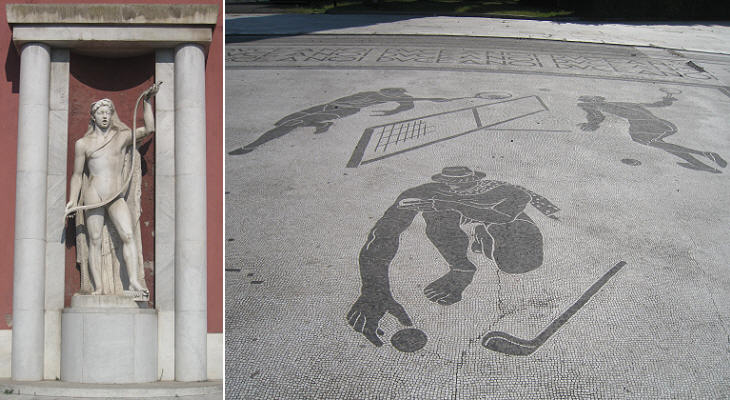  What's New! Detailed Sitemap All images © by Roberto Piperno, owner of the domain. Write to romapip@quipo.it. Text edited by Rosamie Moore. Page revised in August 2010. | 
Secondo Prospetto del Casino di Villa Madama (Book 10) (View C3) (Day 8) In this page:
Giuseppe Vasi dedicated two etchings to Villa Madama because he found the site in such poor condition that he decided to leave a detailed record of the casino designed by Raphael. The villa is named after Margaret, natural daughter of Emperor Charles V and wife of Ottavio Farnese, grandson of Pope Paul III. In the first etching Vasi showed the southern side of the casino which faces Rome, while the second one was dedicated to the elegant loggia facing north and having a view over the countryside and Ponte Milvio.
The view is taken from a distance because Villa Madama is currently used as a location for conferences and dinners by the Italian Foreign Office and security measures are in place to prevent access to the site (more on the history and current status of Villa Madama in the page covering the first etching).
The large photo of Villa Madama was taken from Foro Italico, a complex of sport facilities which was built in the 1930s in the plain between Monte Mario and Ponte Milvio; it is characterized by gigantic statues of naked athletes, often portrayed with a raised hand in a gesture similar to the Roman salute introduced by the Fascist regime of the time. According to Vasi a ruined church (Chiesa diruta) was visible in a vineyard in this area, but the 1887 extensive repertory of churches by Mariano Armellini did not mention it, so probably at that time the building had disappeared completely.
The original name of the complex was Foro Mussolini as it was dedicated to Mussolini, the leader of the Fascist regime on the occasion of the tenth anniversary of his accession to power; the 1932 obelisk at the entrance to the complex bears his name and the word Dux, the title he gave himself as leader of the Fascist Party (Duce del Fascismo).
The construction of Foro Mussolini and in particular of Stadio dei Marmi (designed by Enrico Del Debbio) was a bonanza for Italian sculptors who were asked to portray athletes symbolizing Italian provinces. The facilities and buildings of the complex are of a relatively small dimension which fits well into the green background of the hill; the large stadium which was built for the 1960 Olympic Games and Palazzo della Farnesina, a large building which you can see in the Abridged History of Rome section were added at a later period.
Excerpts from Giuseppe Vasi 1761 Itinerary related to this page:
Next plate in Book 10: Casino della Vigna di Papa Giulio
III
|
